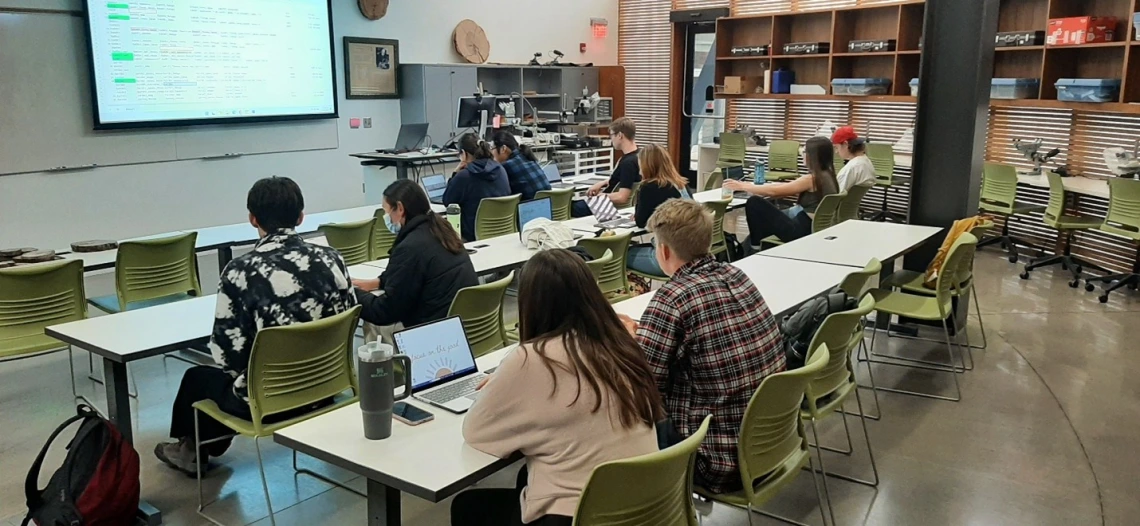Tree-Ring Time Machine: Research Experience in Dendrochronology
CURE courses are designed to integrate undergraduate students into an ongoing research project. Courses are primarily hands-on, with a minimum of lectures, and focused on training students in laboratory techniques needed to investigate research questions. LTRR CURE courses have trained students in the basics of dendrochronology, including crossdating, measuring, chronology compilation, and a variety of basic statistical methods to analyze the resulting paleoclimatic time series. Besides the training, student contribute to an active research program, producing useful and meaningful results. In Bryan and Kiyomi’s CURE course, students are learning how to apply tree-ring methods to the annual growth layers in geoducks. The class of 10 students will update an existing geoduck chronology from coastal British Columbia, and hopefully extend it back in time. They will then analyze the modern part of the record to investigate the climate information reflected in ring-width variations. This information will be used to develop and interpret a centuries-long reconstruction of marine climate. Students will be determining if their geoduck chronology can provide information on North Pacific sea surface temperatures, and if so, their record will enable an assessment of long-term natural variability, including patterns of decadal variability. This work is critical for expanding our understanding of instrumental period Pacific decadal variability, which is hypothesized to be currently “stuck” in a cold phase due to climate warming. The centuries-long record will help inform the unusualness of the persistence of the cold phase, and whether such a period has occurred in the past, under natural variability. The updated chronology will also include two recent warm events, allowing those to be assessed in a long-term context.
The LTRR CURE courses have attracted undergraduate students from a range of majors, and at different stages of their undergraduate careers. Students have chosen to take the course because of a particular interest (this year, marine science), or to gain research experience, or simply to fulfill a requirement for their degree program. This year’s students are majors in geosciences, environmental studies/journalism, anthropology, biology/marine science, Spanish, and French. Although coming from a wide range of undergraduate programs, these differences are not detectable in their levels of engagement and participation. While students are benefiting greatly from the CURE courses, teaching these courses has been very gratifying for the instructors. Seeing students learn about and engage in the process of scientific research and take pride in their accomplishments has been very rewarding. Training students who turn out to be skilled and valuable lab technicians is not a common outcome in a traditional undergraduate class, and our hope is that some of these student may continue on to a graduate program.
If you are interested in learning more about Brian’s work, it was featured in a recent College of Science news article, “Extending tree-ring science from forests to oceans at the University of Arizona” https://science.arizona.edu/news/extending-tree-ring-science-forests-oceans-university-arizona
For more information in geoduck dating and chronology building, see:
Edge, D. C., Reynolds, D. J., Wanamaker, A. D., Griffin, D., Bureau, D., Outridge, C., et al. (2021). A multicentennial proxy record of Northeast Pacific sea surface temperatures from the annual growth increments of Panopea generosa. Paleoceanography and Paleoclimatology, 36, e2021PA004291. https://doi.org/10.1029/2021PA004291

